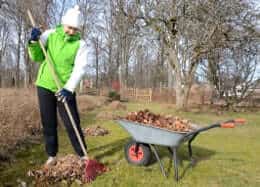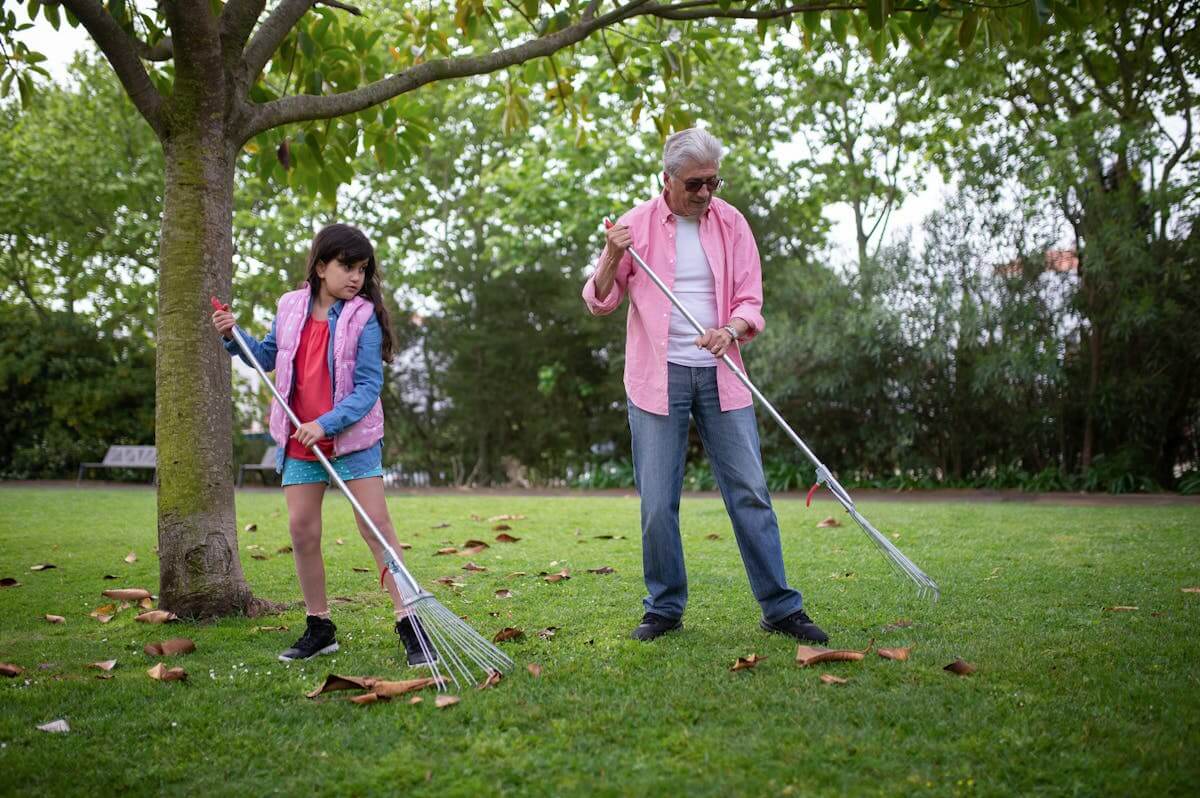Cool Season Grass Lawn Fall Care and Winter Preparation

For everyone with cool season grass lawns, the fall may be the busiest time of year. Lawns are growing vigorously so regular maintenance is required, and you need to get the grass ready for winter before the first winter frost.
Here is a list of some of the most important tasks to check off throughout the season. Completing them at the right time will help your lawn stay healthy during its winter dormancy and decrease the amount of time it takes to green up in the spring.
Important Tasks for Late Summer / Early Fall
Aerate
Aerating your soil will open pathways for air, water, and nutrients to move freely to the roots of the lawn. This is particularly important if your lawn is growing on top of a layer of compacted soil. This should ideally be done at the beginning of the growing season so the lawn has time to recover.
Dethatch
As with compacted soil, thatch keeps water and nutrients from the roots, and it can also harbor disease. The soil plugs pulled up from aeration can help to decompose thatch layers, but you may need to use a vertical mower to completely eliminate it. Do this early so your grass isn’t weakened right before the winter frost.
Overseed
If your lawn has suffered over the course of the summer, it may require overseeding to fill in thin areas. It is particularly helpful to reseed right after aerating the soil, since there are new holes for the seeds to fall into. Be sure to support the new grass seeds with the right amount of watering until they have germinated.
Fertilize
Early in the season, apply a nitrogen fertilizer, no more than 1 lb. of pure nitrogen per 1000 sq. ft. If you are not sure how much fertilizer is required, you should have a soil analysis performed.
Eliminate Weeds
If cultural management has not been enough to get rid of some weeds, you can now use a post emergence herbicide on them. If you choose to do this, proceed with caution and follow the herbicide directions diligently. Continue Normal Maintenance. This includes mowing and irrigation.

Late Fall, Before the First Frost
Remove Leaves
Your grass lawn is in the process of storing energy for its dormancy by completing photosynthesis. Autumn leaves and other debris can block sunlight and limit the amount of photosynthesis occurring.
Apply A Light Fertilizer
To provide nitrogen to support the root system while the grass is dormant, apply a light fertilizer. Don’t apply too much, as you do not want to encourage new growth at this time. Use a lowered application rate of a slow-release fertilizer for best results.
Irrigate
Give your lawn a final, deep irrigation prior to the first winter freeze to prolong the life of the root system.
Mow a Final Time (and Mow Short)
Once your grass stops growing, mowing will no longer be required. For the final cut, mow it shorter than usual while making sure you don’t “scalp” it. This will limit the amount of moisture the grass lawn retains and make it less vulnerable to diseases like snow mold.
Drain the Sprinklers
If sprinkler pipes contain water when temperatures fall below freezing, the pipes may crack from expansion of the ice.
